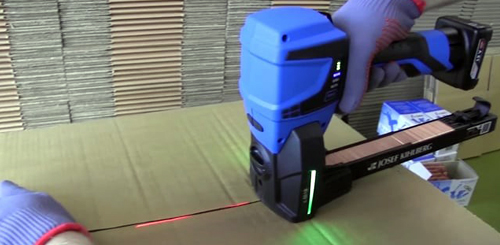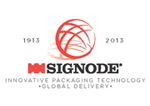Signode Updates
Stapling as a Sustainable option for Box Closure |
 |
| There are multiple ways to close a corrugated box or a carton - Taping with BOPP Tape or Paper Gum Tape, Strapping with PP or PET strap, Sealing by Hot melt Glue, Wrapping with Shrink or Stretch Films or by using Stapling. |
| Each of the above options has its own pros and cons. One needs to choose the option best suited to their specific industry applications. As we have witnessed in the recent past, environmental laws especially against Single Use Plastics are getting stiffer, and each supplier must take responsibility ensuring that the packaging meets the statutory requirements. Often, we may need to use a combination of more than one method to ensure proper closure of the box and achieve the intended objectives - Taping & Strapping, Taping and Stapling, Stapling and Hot Melt, Strapping and Shrink Wrap etc. |
| Some pertinent questions one must consider while choosing the box closing options: |
|
| Now let us look at Stapling as one of the most optimal & sustainable options for box closing. It involves closing the major and minor flaps of a corrugated box by means of a stapler tool and a staple pin (usually made of steel wire & coated with copper enamel or galvanised with zinc) for increased resistance to harsh environments. The stapler tool closes the staple pins by specially formed clinching legs thus forming the staple joint. |
 |
| Benefits of Stapling: |
|
| Application of Box Stapling: |
| There are various methods of applying a staple to the corrugated box or a carton. These are: |
| Manual Stapler: This is a handy tool which is operated manually. It can be easily carried anywhere for the stapling operation - shop floor, warehouse, on the truck etc |
 |
| Pneumatically Stapler: This tool uses the input of pneumatic pressure for operations. This provides consistent performance and higher outputs. |
 |
| Battery Stapler: This is the latest innovation in the field of stapling. It eliminates the need for having pneumatic hoses or cords across the assembly lines and allows the operator to have the freedom to move the tool around the plant area for the stapling operation. This provides the flexibility of a manual tool and the speed of a pneumatic tool for the stapling operation. |
 |
| Carton Stapling Machine: This is an automatic stapling solution for online operations. The machine has two pneumatic staplers mounted on a belt driven carton sealing machine. The cartons are fed into the sealing machine and the top and bottom stapling of the cartons is achieved. Remote triggers are built-in into the pneumatic stapling machines. The location of the staple joints can be programmed by sensors to have multiple staple joints on the top and bottom of the carton. This method can be adopted when the production speeds are higher and there is a need for a stapling operation to be carried out without manual intervention. |
 |
| Closure of Corrugated Lids/Sleeves – Often, the lids of corrugated boxes are joined or formed or stapled at the last mile to avoid damage during transit. Formed lids are usually not nestable and are often prone to damage. A simple cost effective solution for stapling of the lids is by means of a manual or a pneumatic plier stapler. These can be effectively used to form lids at the last mile or the point of usage, which can avoid costly damages to the lids. |
 |
 |
 |
| Signode has two well-known, global brands which have a long history of innovation in the field of Stapling Technology. |
| Josef Kihlberg (JK), which dates back to 1841, is a leading supplier of staplers and staples for professional use, mainly in Europe and North America. JK develops, manufactures, and markets world-leading staplers and staples for industrial stapling and transportation packaging. www.kihlberg.com/en/ |
| Mezger was founded in 1920 and is one of the leading manufacturers of stapling devices and stapling machines based in Germany. In addition to the carton closing, the MEZGER staple fastening technology is used for a vast number of highly different materials & industries including automotive industry and general engineering. The product line ranges from inexpensive hand staplers for small demand to high-speed machines for completely automated processing. www.mezger.eu |
 |
| Authored by Sudarshan Kolhatkar - Director Sales Industrial Packaging Group |
Back |
- | Home |
- | Next |

